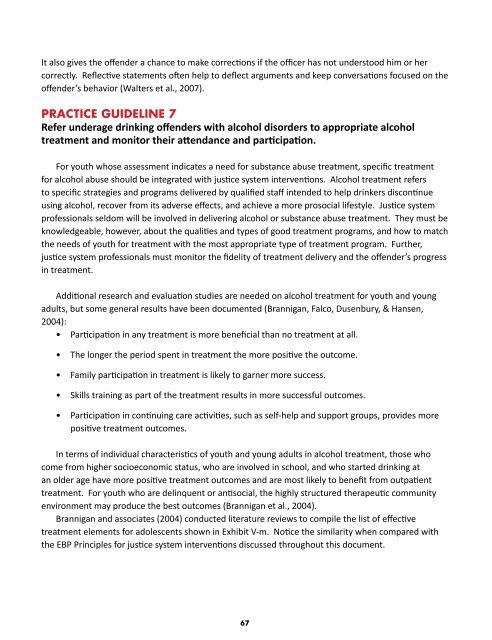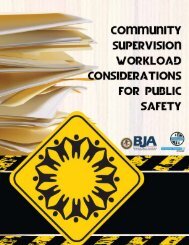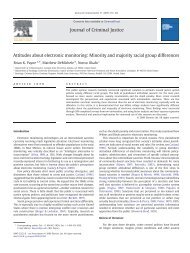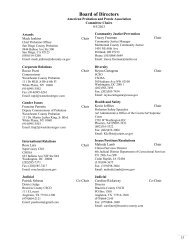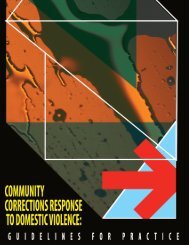Intervention Principles and Practice Guidelines for - Underage ...
Intervention Principles and Practice Guidelines for - Underage ...
Intervention Principles and Practice Guidelines for - Underage ...
You also want an ePaper? Increase the reach of your titles
YUMPU automatically turns print PDFs into web optimized ePapers that Google loves.
It also gives the offender a chance to make corrections if the officer has not understood him or her<br />
correctly. Reflective statements often help to deflect arguments <strong>and</strong> keep conversations focused on the<br />
offender’s behavior (Walters et al., 2007).<br />
<strong>Practice</strong> Guideline 7<br />
Refer underage drinking offenders with alcohol disorders to appropriate alcohol<br />
treatment <strong>and</strong> monitor their attendance <strong>and</strong> participation.<br />
For youth whose assessment indicates a need <strong>for</strong> substance abuse treatment, specific treatment<br />
<strong>for</strong> alcohol abuse should be integrated with justice system interventions. Alcohol treatment refers<br />
to specific strategies <strong>and</strong> programs delivered by qualified staff intended to help drinkers discontinue<br />
using alcohol, recover from its adverse effects, <strong>and</strong> achieve a more prosocial lifestyle. Justice system<br />
professionals seldom will be involved in delivering alcohol or substance abuse treatment. They must be<br />
knowledgeable, however, about the qualities <strong>and</strong> types of good treatment programs, <strong>and</strong> how to match<br />
the needs of youth <strong>for</strong> treatment with the most appropriate type of treatment program. Further,<br />
justice system professionals must monitor the fidelity of treatment delivery <strong>and</strong> the offender’s progress<br />
in treatment.<br />
Additional research <strong>and</strong> evaluation studies are needed on alcohol treatment <strong>for</strong> youth <strong>and</strong> young<br />
adults, but some general results have been documented (Brannigan, Falco, Dusenbury, & Hansen,<br />
2004):<br />
• Participation in any treatment is more beneficial than no treatment at all.<br />
• The longer the period spent in treatment the more positive the outcome.<br />
• Family participation in treatment is likely to garner more success.<br />
• Skills training as part of the treatment results in more successful outcomes.<br />
• Participation in continuing care activities, such as self-help <strong>and</strong> support groups, provides more<br />
positive treatment outcomes.<br />
In terms of individual characteristics of youth <strong>and</strong> young adults in alcohol treatment, those who<br />
come from higher socioeconomic status, who are involved in school, <strong>and</strong> who started drinking at<br />
an older age have more positive treatment outcomes <strong>and</strong> are most likely to benefit from outpatient<br />
treatment. For youth who are delinquent or antisocial, the highly structured therapeutic community<br />
environment may produce the best outcomes (Brannigan et al., 2004).<br />
Brannigan <strong>and</strong> associates (2004) conducted literature reviews to compile the list of effective<br />
treatment elements <strong>for</strong> adolescents shown in Exhibit V-m. Notice the similarity when compared with<br />
the EBP <strong>Principles</strong> <strong>for</strong> justice system interventions discussed throughout this document.<br />
67


